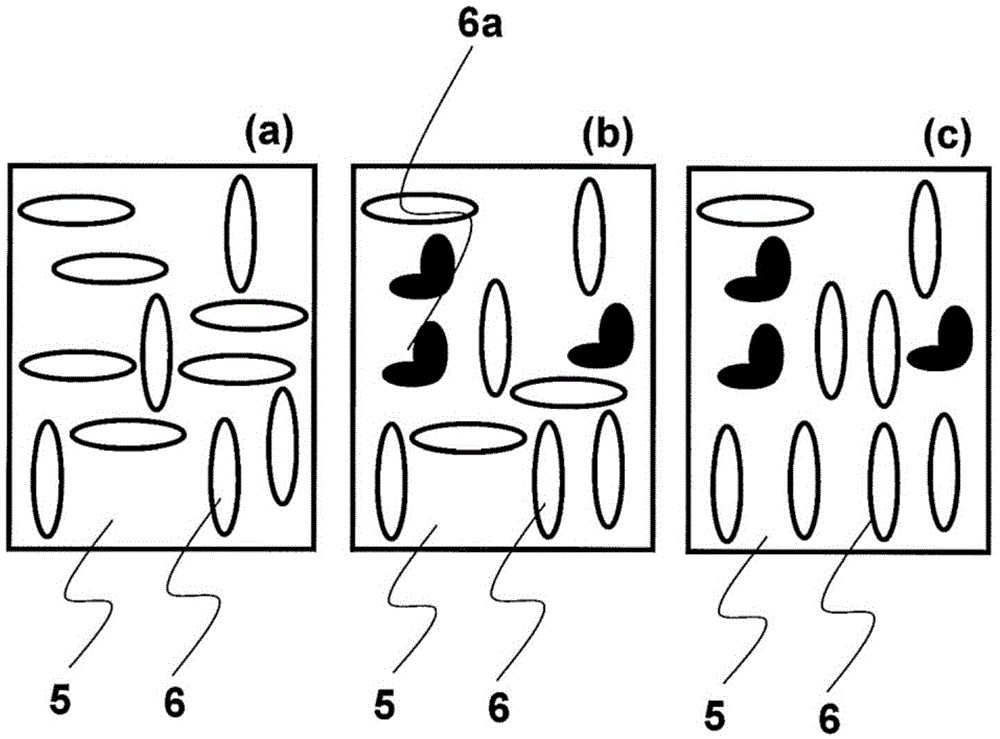Method for producing substrate having liquid crystal alignment film for in-plane switching liquid crystal display elements
A technology of liquid crystal alignment film and transverse electric field, applied in optics, instruments, nonlinear optics, etc., can solve the problems of dust generation, static electricity, and inability to uniformly rub the liquid crystal alignment film.
- Summary
- Abstract
- Description
- Claims
- Application Information
AI Technical Summary
Problems solved by technology
Method used
Image
Examples
preparation example Construction
[0281] [Preparation of polymer composition]
[0282] The polymer composition used in the present invention is preferably prepared in the form of a coating liquid so as to be suitable for forming a liquid crystal aligning film. That is, the polymer composition used in the present invention is preferably prepared in the form of a solution in which a resin component for forming a resin coating is dissolved in an organic solvent. Here, the resin component refers to a resin component containing the above-mentioned photosensitive side chain type polymer capable of expressing liquid crystallinity. In this case, the content of the resin component is preferably 1% by mass to 20% by mass, more preferably 3% by mass to 15% by mass, particularly preferably 3% by mass to 10% by mass.
[0283] In the polymer composition of this embodiment, the above-mentioned resin components may all be the above-mentioned photosensitive side-chain polymers capable of exhibiting liquid crystallinity,...
Embodiment
[0353] Abbreviations used in Examples are as follows.
[0354]
[0355]
[0356] MA1 was synthesized by the synthesis method described in the patent document (WO2011-084546).
[0357] MA2 was synthesized by the synthesis method described in the patent document (Japanese Patent Laid-Open No. 9-118717).
[0358]
[0359] THF: Tetrahydrofuran
[0360] NMP: N-methyl-2-pyrrolidone
[0361] BC: Butyl cellosolve
[0362]
[0363] AIBN: 2,2'-Azobisisobutyronitrile
Synthetic example 1
[0365] MA1 (9.97 g, 30.0 mmol) was dissolved in THF (92.0 g), and after degassing with a diaphragm pump, 0.246 g (1.5 mmol) of AIBN was added and degassed again. Then, it was made to react at 50 degreeC for 30 hours, and the polymer solution of the methacrylate was obtained. This polymer solution was added dropwise to diethyl ether (1000 ml), and the resulting precipitate was filtered. This deposit was wash|cleaned with diethyl ether, and it dried under reduced pressure in the oven of 40 degreeC, and obtained the methacrylate polymer powder.
[0366] NMP54.0g was added to the obtained powder 6.0g, and it stirred at room temperature for 3 hours. Furthermore, BCS40.0g was added to this solution, and it stirred at room temperature for 1 hour, and obtained the polymer solution (A1) whose solid content concentration was 6.0 wt%. This polymer solution becomes the liquid crystal aligning agent for forming a liquid crystal aligning film as it is.
PUM
| Property | Measurement | Unit |
|---|---|---|
| Wavelength | aaaaa | aaaaa |
| Wavelength | aaaaa | aaaaa |
| Thickness | aaaaa | aaaaa |
Abstract
Description
Claims
Application Information
 Login to View More
Login to View More - R&D
- Intellectual Property
- Life Sciences
- Materials
- Tech Scout
- Unparalleled Data Quality
- Higher Quality Content
- 60% Fewer Hallucinations
Browse by: Latest US Patents, China's latest patents, Technical Efficacy Thesaurus, Application Domain, Technology Topic, Popular Technical Reports.
© 2025 PatSnap. All rights reserved.Legal|Privacy policy|Modern Slavery Act Transparency Statement|Sitemap|About US| Contact US: help@patsnap.com



